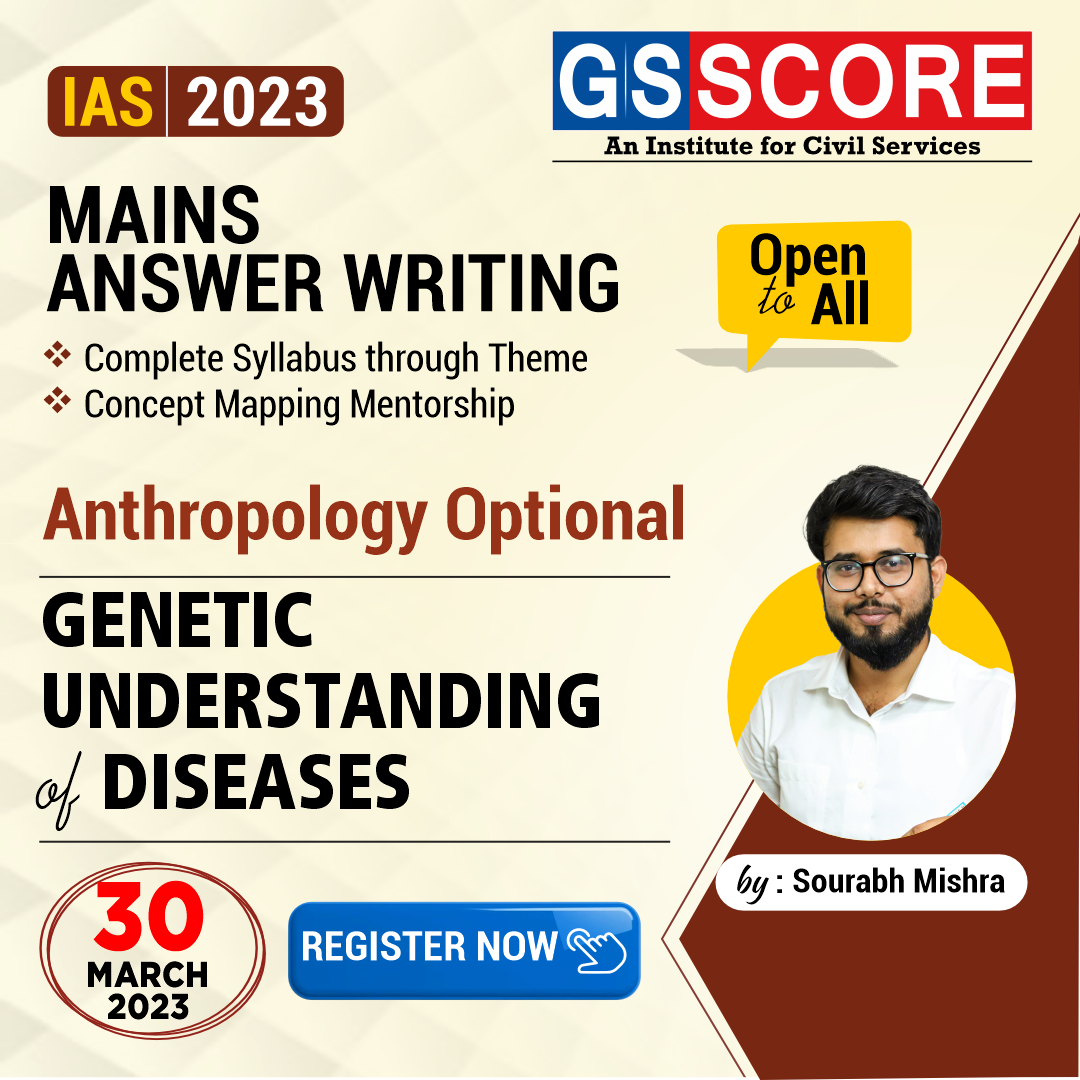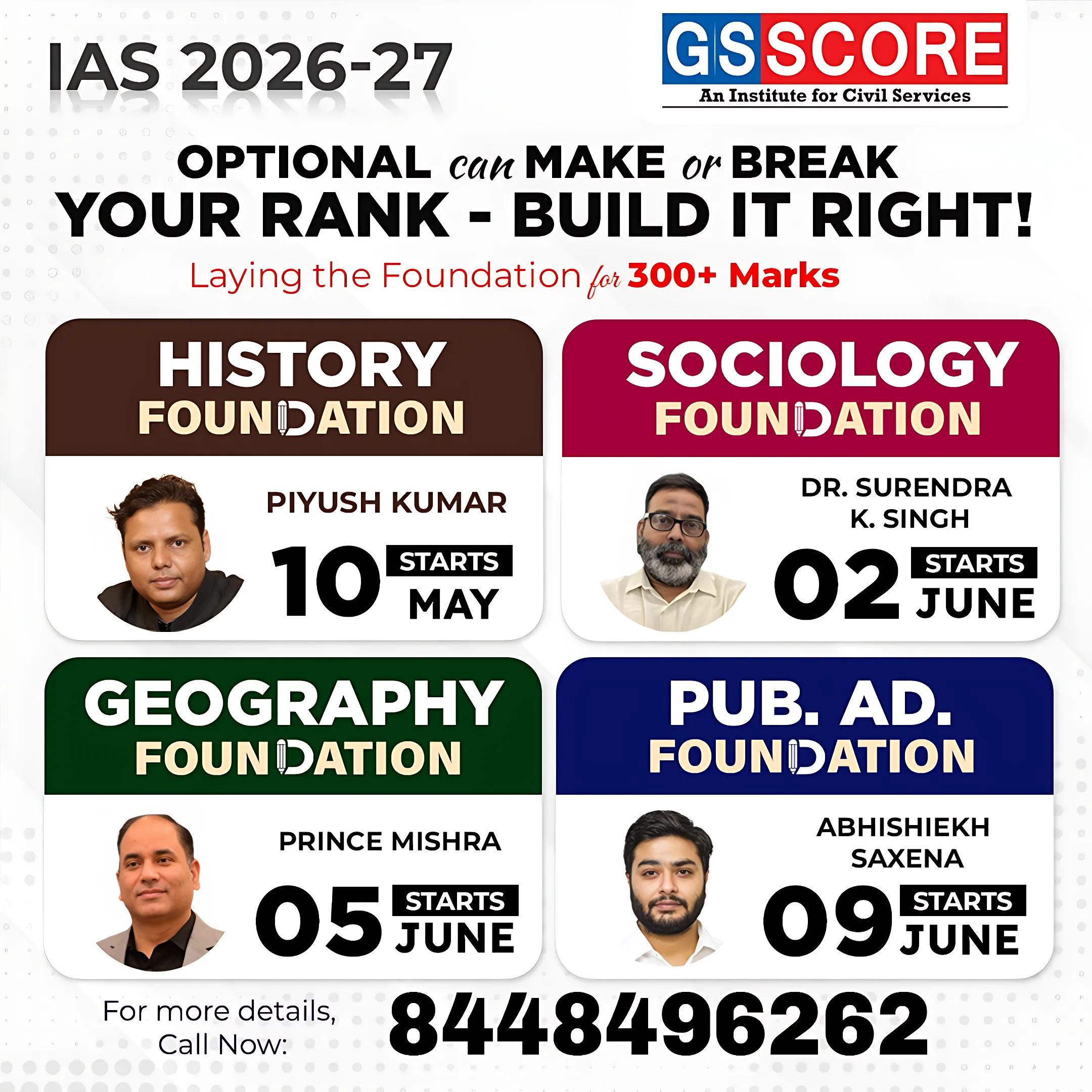


Instruction:
- There will be 2 questions carrying 10 marks each. Write your answers in 150 words
- Any page left blank in the answer-book must be crossed out clearly.
- Evaluated Copy will be re-uploaded on the same thread after 2 days of uploading the copy.
- Discussion of the question and one to one answer improvement session of evaluated copies will be conducted through Google Meet with concerned faculty. You will be informed via mail or SMS for the discussion.
Question #1. write short notes on Consanguineous mating.
Question #2. Discuss numerical and structural chromosomal aberrations in man illustrating with examples.
(Examiner will pay special attention to the candidate's grasp of his/her material, its relevance to the subject chosen, and to his/ her ability to think constructively and to present his/her ideas concisely, logically and effectively).
STEPS & INSTRUCTIONS for uploading the answers
Step 1 - The Question for the day is provided below these instructions. It will be available at 7:00 AM.
Step 2 - Uploading of Answers : Write the answer in A4 Sheet leaving proper margins for comments and feedback and upload the PDF in MY ACCOUNT section. Click on the option of SUBMIT COPY to upload the PDF.
Step 3 - Deadline for Uploading Answers: The students shall upload their answers by 7:00 PM in the evening same day. The first 50 copies will be evaluated.
Step 4 - Feedback : Mentors will give their feedback for the answers uploaded. For more personalised feedback, join our telegram channel by clicking on the link https://t.me/mains_answer_writing_cse . A one-to-one session will be conducted with the faculty after copy evaluation in 72 Hrs.
Model Answer
Question #1. write short notes on Consanguineous mating.
- Introduction- Explanation of the term
- Forms of consanguinity
- Consanguinity and inbreeding
- Prevalence in India
- Consequences
Hints:
- Inbreeding or consanguineous marriage is found in many communities across the world. Impacts of inbreeding are mainly deleterious.
- This social phenomenon having implications on human health can only be controlled by cultural response.
- Inbreeding means marriage between close relatives who consider themselves having common ancestor a few generations back.
- The degree of consanguinity depends upon the distance of relationship and it also varies from society to society.
Forms of consanguineous marriages:
- Consanguineous marriage is practiced in different societies at different degrees.
- There are different forms of consanguineous marriages which are classified based on the magnitude of relationships:
– First cousin marriage
– Second cousin marriage
– Uncle-niece marriage
In some societies, consanguineous marriages have been encouraged, for example, in Egyptians and Incas favoured unions of brothers and sisters of the reigning dynasty to maintain ‘royal blood’ in the family.
However, reasons for practicing such marriages are varied from one community to the other. It is called Incest. However, generally incest is considered a taboo across all societies.
Prevalence in India:
- According to NFHS-4 (2015), fourteen percent of marriages in India are consanguineous marriages, which are more common in all of the southern states except Kerala.
- Pondicherry records the highest level of consanguineous marriage (uncle-niece) in a single generation, with 54.9%
Impacts of inbreeding:
Inbreeding has no effect on the inheritance of dominant alleles but has effects on that of recessive alleles in the following ways:
- Effects of inbreeding or consanguineous marriage in the short run:
- Close relatives share several alleles or genes in common. Because of inbreeding the probability of carrier mating another carrier increase.
- Consequently, there is increasing homozygosity of recessive alleles or recessive genetic disorders get exposed or appear in the population.
Example1:
Although 0.1 % of marriage in USA is between first cousin. However around 8% of albino children is found among them.
Example-2:
Dwarfism is prevalent among the Amish people in Pennsylvania in USA. The number of Amish people is small and do practice inbreeding to maintain cultural identity.
There is found a high percentage of some rare allele such as one responsible for ELLIS-VAN CREVALD syndrome, characterized by dwarfism, polydactyly and malformed heart etc. the syndrome is very rare with fewer than 50 cases are found outside the Amish population but among the small Amish population around 45 cases are known.
Example-3:
Recessive autosomal disorders are quite frequent among the communities practicing cousin marriages.
Effect of inbreeding in the long run:
- Inbreeding is not always considered to be harmful.
- It is found that people who have a tradition for hundreds of years of practicing consanguineous marriage or inbreeding, do have the incidence of harmful recessive alleles less or nil.
- Since consanguineous marriage of much longer duration reduce the proportion of homozygosity through natural selection i.e. through the death of individuals, harmful recessive alleles are lost from the population.
- There by normal alleles continues in the population.
- Thus, in the long run the net result of consanguineous marriage is like those populations without such practices.
- Because of elimination of recessive alleles, population loses genetic diversity in the gene pool.
- Since environment is ever changing, mutant gene though mainly harmful can be proved to be beneficial under changing environmental circumstances.
E.g. Sickle cell allele can provide resistance against malaria.
Control of impacts of inbreeding:
- Though inbreeding is mainly harmful and helps in the appearance of genetic disease in the population which cannot be cured at the present level of medical advancement.
- Hence, prohibition of inbreeding through incest taboo can reduce the impacts by preventing from the appearance of recessive disorder.
- Thus, impacts of inbreeding are biological in nature which could be controlled by cultural phenomena i.e. incest taboo.
Question #2. Discuss numerical and structural chromosomal aberrations in man illustrating with examples.
Approach:
- Introduction- explanation of the term
- Normal set up
- Causes
–Types: Numerical and structural
–Explanation of the term
–Sub types and examples
–Diagrams
- Illustrate one-one example from each type of aberration
- Diagnosis
- Treatment/potential remedies
Hints:
Chromosomal aberrations
Chromosomal aberrations, or abnormalities, are changes to the structure or number of chromosomes, which are strands of condensed genetic material. Humans typically have 23 pairs of chromosomes, of which 22 pairs are autosomal, numbered 1 through 22. The last pair of chromosomes are sex chromosomes, which determine an individual’s sex assignment. At birth, most people with XY sex chromosomes are assigned male, and most individuals with XX are assigned female. In general, each parent contributes one set of chromosomes to their offspring, which collectively make up the 23 pairs of chromosomes. A change to any of the chromosomes, in number or structure, creates a chromosomal aberration and may cause medical disorders.
Structural chromosomal aberrations
Deletion
- Deletions occur when a portion of the chromosome is deleted, or taken out, which can make that chromosome less functional.
- For example, when part of a short arm in chromosome 5 is deleted, this causes Cri-du-chat syndrome, common symptoms of which are reduced head size and high-pitched crying in infants.
Duplication
- When a segment of a chromosome is present more than once in a chromosome then, it is called duplication. .
- In duplication, part of the chromosome is duplicated, resulting in extra genetic material.
- This occurs in Charcot-Marie-Tooth disease type I, which duplicates part of chromosome 17, causing muscle weakness.
Inversion
- Inversion of a chromosome happens when the genetic material is inverted, or flipped in the opposite direction.
- Inversions do not often result in disease and most commonly affect chromosome
- Two types of inversion:
- In pericentric inversion, the inverted segment of the chromosome contains centromere. Sometimes, it is responsible for evolution of the organism.
- For example the 17th human chromosome is acrocentric, while in Chimpanzee the corresponding chromosome is metacentric.
- In paracentric inversion, the inverted segment of the chromosome has no centromere.
Translocation
- Translocations occur when a piece of one chromosome has broken off from its original location and attached to another chromosome.
- The most common example is a Robertosonian translocation, which results when two acrocentric chromosomes (chromosomes with arms of unequal lengths due to a non-centered centromere) lose the short arms of the chromosomes, and the two long arms consequently conjoin.
- Robertsonian translocations are one potential cause of trisomies.
Numerical chromosomal aberrations
- Each species of an organism has a specific number of chromosomes in its somatic cells. .
- These chromosomes are found in pairs.
- At the time of formation of gametes the chromosome number is reduced. Hence, the gemetes carry haploid set of chromosomes.
- Alterations in the number of chromosomes from the diploid set is called numerical chromosomal aberration.
- It is also known as ploidy.
- There are two types of ploidy- euploidy and aneuploidy.
1. Euploidy
- Euploidy is the variation in the chromosome number that occurs due to increase or decrease of full set of chromosomes.
- Monoploidy, diploidy and polyploidy are the types in euploidy.
Diploidy
- In most of the plants and animals, the somatic cells contain two sets of chromosome.
- Diploidy is formed by the union of two gametes during fertilization.
Polyploidy
- Addition of one or more sets of chromosomes to the diploid set results in polyploidy.
- It is commonly noticed in plants and rare in animals.
2. Aneuploidy
- Variation that involves one or two chromosomes within the diploid set of an organism results in aneuploidy.
- It is of two types - hypoploidy and hyperploidy.
Hypoploidy
- Decrease in one or two chromosomes from the diploid set is described as hypoploidy.
- There are two types of hypoploidy - monosomy and nullisomy.
- Monosomy is due to loss of a chromosome from the diploid set i.e. 2n - 1.
- Nullisomy is the condition in which a pair of homologous chromosomes is lost from the diploid set i.e. 2n - 2.
Hyperploidy
- Addition of one or two chromosomes to the diploid set of chromosome results in hyperploidy.
- There are two types of hyperploidy - trisomy and tetrasomy.
- Trisomy results due to the addition of one chromosome to diploid set of chromosomes.
- It is represented by 2n + 1.
- Trisomics are observed in Datura stramonium.
- Tetrasomy results due to the addition of two chromosomes to diploid set of chromosome. It is represented by 2n+2.
Causes of chromosomal aberrations:
- Chromosomal aberrations are most often caused by errors during cell division.
- Cell division in humans occurs via mitosis or, only in sex chromosomes, meiosis.
- Aneuploidy may result when an error occurs during meiosis.
- Most commonly this error is known as nondisjunction, when a set of chromosomes do not properly separate, which leaves one or two sex cells with an extra chromosome or with one less chromsome.
- If a sex cell affected by nondisjunction undergoes fertilization, the resulting offspring will have inherited one more or one less chromosome and may develop a chromosomal disorder.
- Sometimes, chromosomal disorders are caused by mosaicism, when there are two or more different cell lines in one person.
- Mosaicism can occur after nondisjunction happens in a mitotic cell division during early embryonic development.
- This results in one line of cells with a chromosomal aberration while other lines may stay unchanged.
- Late pregnancies
- Contact with mutagens- UV light, gamma radiation, carcinogens like aflatoxin
- Botched genetic therapy
Diagnosis:
- Clinical examination
- Chromosomal aberrations in offspring can often be diagnosed during prenatal screenings prior to birth.
- An ultrasound near the end of the first trimester or early in the second trimester can show increased nuchal translucency, which is a measure of the fluid-filled space in the back of the neck, potentially indicating trisomy 13, 18, or 21.
- A blood screening may also be conducted in the late first trimester.
- Prenatal diagnostic techniques:
– Amniocentesis
– Chorionic villus sampling
– Umbilical cord
– Karyotyping.
General Prevention / Treatment:
- Genetic counseling
- CBT — Cognitive behavioral therapy.
- Physical therapy (Physiotherapy)
Conclusion:
These numerical or structural aberrations cannot be cured but prevented. Moreover changes in individual affected with abnormalities have no role in evolution since they cannot transmit their genes to next generations and are eliminated by nature through death.


